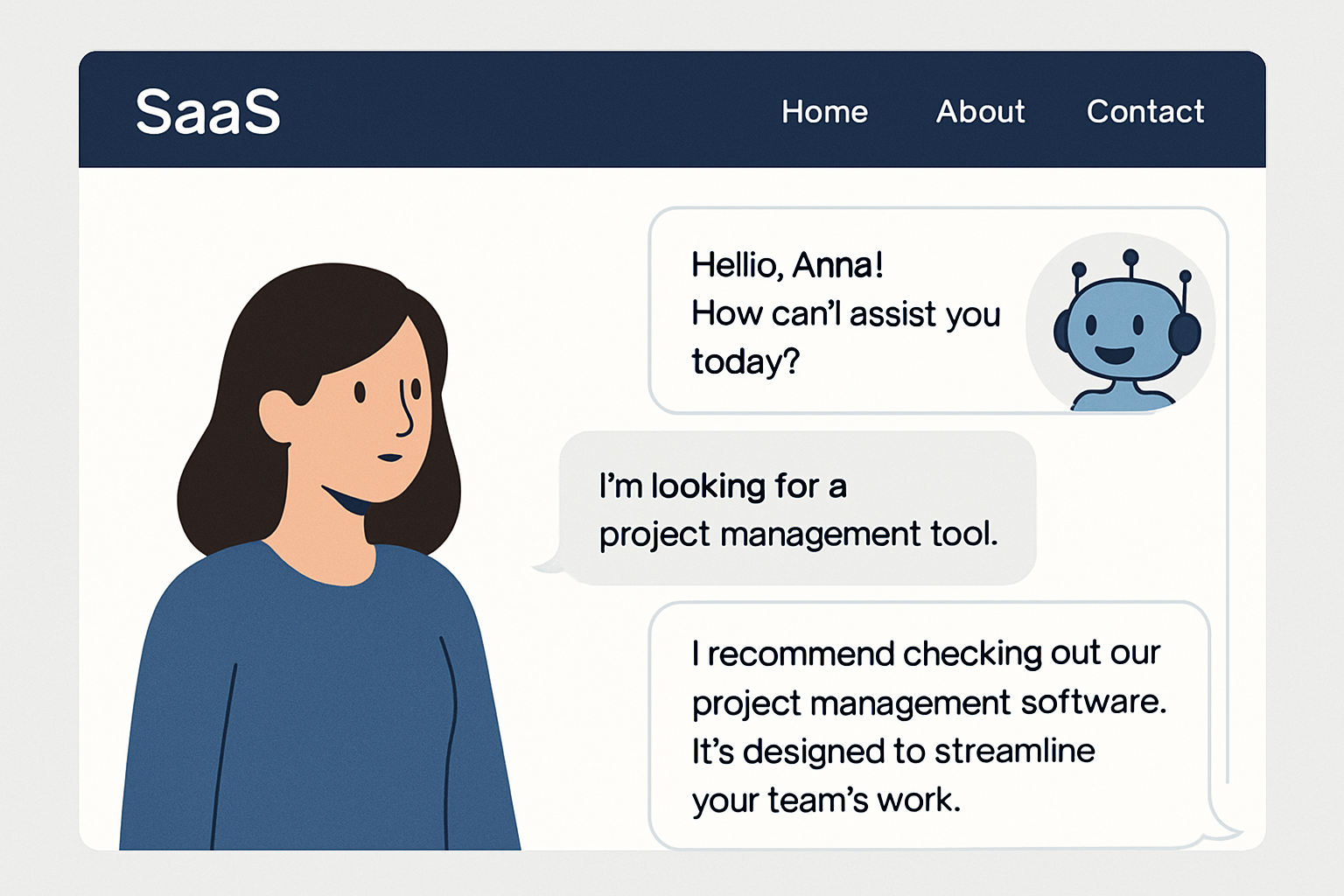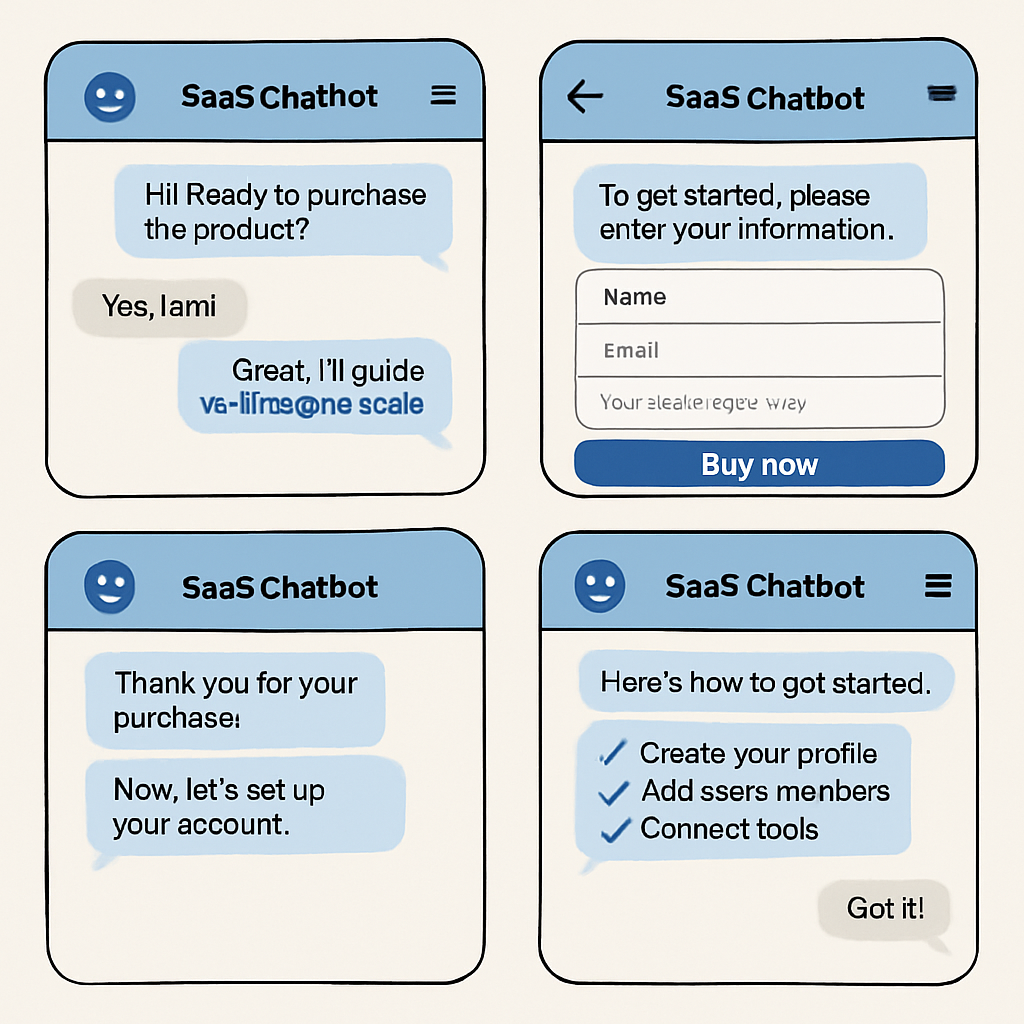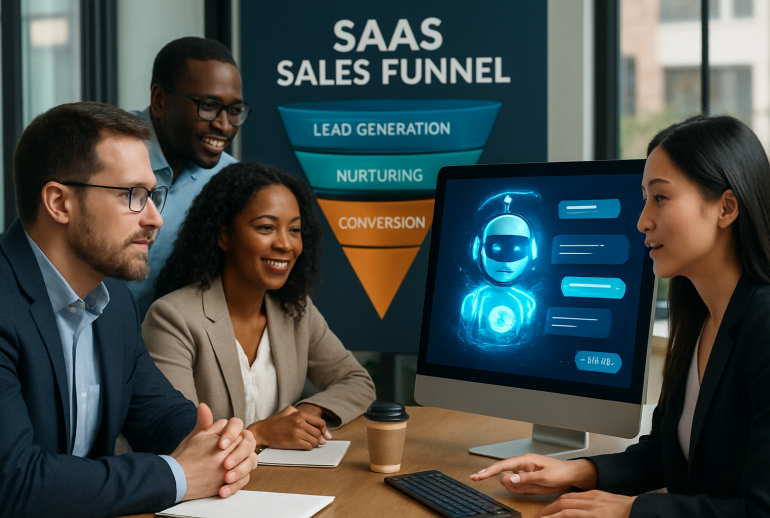In the fast-evolving world of Software as a Service (SaaS), businesses need every edge they can find to capture, nurture, and convert potential customers. Among the most transformative tools are chatbots—intelligent virtual agents that guide users through their purchasing journey efficiently and personally. Integrating chatbots into your SaaS sales funnel isn’t just a trend; it’s a strategic necessity to optimize engagement, reduce drop-off, and ultimately, increase revenue. From the initial visitor’s curiosity to loyal customer retention, chatbots provide seamless, on-demand interaction. This article explores the pivotal role chatbots play at every stage of your SaaS sales funnel, illustrating how leading platforms like Drift, Intercom, HubSpot, and Salesforce leverage these AI-powered assistants to boost sales performance and user satisfaction.
As competition intensifies and customer expectations rise, businesses no longer thrive on static landing pages or delayed responses alone. Modern buyers expect personalized guidance instantly, anytime they interact with a brand. Chatbots fulfill this demand by automating responses, qualifying leads, and reducing friction—freeing sales teams to focus on complex issues and closing deals. In a SaaS context, chatbots can showcase product features, answer technical queries, and even onboard new users with customized workflows. But the value extends beyond just automation; it lies in creating an intelligent conversational experience that turns anonymous visitors into qualified prospects and enthusiastic customers.
Moreover, with integration possibilities through platforms such as Zendesk, Freshchat, Tawk.to, Chatfuel, ManyChat, and LiveChat, chatbots become part of a broader customer relationship strategy—supporting sales, marketing, and customer success teams alike. This cohesive approach accelerates lead progression through the funnel stages: from Awareness and Interest, through Decision and finally to Retention. As we dissect each phase, expect actionable insights and examples designed to inspire SaaS businesses to reinvent their sales approach using conversational AI.
Enhancing Awareness: How Chatbots Attract SaaS Leads
The beginning of the SaaS sales funnel—commonly referred to as the Awareness stage—is when potential customers first realize a problem or opportunity that your software might solve. Here, the core objective is to capture attention and spark curiosity. Traditional methods like SEO, paid ads, or content marketing lay the groundwork, but chatbots add a dynamic layer that personalizes and accelerates user interaction.
At this stage, chatbots serve as virtual greeters and educators. Imagine a visitor landing on your SaaS product website after searching for “team collaboration tools for remote work.” Instead of passively browsing, they are welcomed by a chatbot powered by conversational AI, perhaps via Intercom or Drift, that immediately asks tailored questions like, “Are you managing a small team or a large enterprise?” This early engagement captures crucial intent without requiring the visitor to fill long forms manually.
Such chatbots can offer value instantly by suggesting relevant resources including whitepapers, explainer videos, or case studies aligned with visitor needs. For SaaS companies focusing on specific niches or complex features, chatbots can segment visitors into preliminary personas for targeted nurturing later. This granular approach enhances lead quality early and improves conversion potential dramatically.
In monitoring these initial interactions, platforms like HubSpot and Salesforce provide rich analytics that reveal which chatbot scripts convert best, allowing continuous refinement of messages and interaction flows.
- Lead generation uplift: Chatbots can boost top-of-funnel lead generation by up to 202%, according to industry analyses.
- 24/7 availability: Unlike human agents, chatbots offer round-the-clock engagement, meeting prospects whenever they choose to visit.
- Automated qualification: Simple qualifying questions right from the start help segregate casual visitors from serious buyers.
- Personalized material delivery: Chatbots can guide visitors to specific landing pages or resources that best fit their profile.
- Seamless navigation: They assist users in finding product demos, pricing details, or customer testimonials swiftly.
Integrating chatbot systems such as Freshchat or Tawk.to at this phase ensures that the SaaS website acts as both an informational hub and an active conversion channel rather than a static brochure.
| Chatbot Role | Benefits | Example Platforms |
|---|---|---|
| Greeting and immediate engagement | Improves visitor retention and initiates conversation | Drift, Intercom |
| Lead qualification | Separates prospects effectively and efficiently | HubSpot, Salesforce |
| Resource recommendation | Personalizes user experience, builds trust | Freshchat, Zendesk |
| Navigation assistance | Reduces bounce rates and aids self-service | Tawk.to, LiveChat |

Driving Interest: The Role of Chatbots in Lead Nurturing for SaaS
Once a visitor becomes aware of your SaaS solution, they move to the Interest phase, where they seek more detailed information to evaluate your offering against their needs. Here, chatbots shift from engaging to nurturing, fostering trust and guiding prospects along a personalized path within your sales funnel.
At this stage, chatbots powered by conversational AI tools like Chatfuel or ManyChat excel by providing on-demand detailed product explanations and addressing common customer pain points instantly. They can answer questions about integration capabilities, pricing tiers, or specific feature functionalities without waiting for human intervention.
Moreover, chatbots can nurture leads through dynamic content delivery—offering personalized webinars, product walkthroughs, and ROI calculators tailored to the prospect’s segment. For example, a SaaS platform offering marketing automation could use its chatbot to guide prospects to sign up for a free trial through a contextual conversation or invite them to a case study webinar relevant to their industry.
Nurturing also benefits from lead segmentation, where chatbot interactions classify prospects based on their behavior or queries, automatically tagging them for targeted email campaigns or sales follow-ups. This integrated approach between chatbots and CRM systems like Salesforce or HubSpot streamlines communication and increases the quality of leads moving further down the funnel.
- Instant support: Chatbots reduce wait times, enhancing user patience and engagement.
- Lead segmentation: Automatic classification allows tailored nurturing strategies.
- Personalized messaging: Context-aware chatbot scripts build rapport and trust.
- Interactive content delivery: Webinars, demos, and trial offers increase conversion probability.
- Data-driven optimization: Analytics from Intercom or LiveChat inform continuous improvements in chatbot communication.
This stage is also critical for reducing lead drop-off, a common SaaS sales challenge. By delivering timely and relevant answers, chatbots can keep hesitant prospects moving forward without overwhelming sales teams.
| Interest Stage Activity | Chatbot Contribution | Impact on SaaS Sales Funnel |
|---|---|---|
| Answer product-related inquiries | Deploy AI-powered conversational scripts providing instant responses | Shortens lead nurturing cycle |
| Offer tailored demo scheduling | Provide booking automation integrated with CRM and calendar tools | Increases demo attendance rates |
| Deliver personalized content | Recommend resources based on lead qualification data | Enhances lead engagement and qualification |
| Qualify leads for sales handoff | Use conversational questionnaires and behavior analysis | Improves sales team efficiency |
Closing the Deal: Chatbots as Accelerators at the Decision Stage
When a prospect advances to the Decision phase of the SaaS sales funnel, they are prepared to make a purchase choice but may require crucial assistance to finalize it. At this stage, chatbots act as knowledgeable sales associates, delivering a personalized and frictionless purchasing experience that minimizes hesitation and maximizes conversions.
Leading SaaS companies utilize chatbots integrated with Salesforce and HubSpot to provide real-time pricing quotes, contract clarifications, and seamless payment options during the sales conversation. Such bots guide prospects through product comparison tools, highlight discounts, or present limited-time offers, effectively driving urgency while answering last-minute objections.
Chatbots also excel at transitioning prospects to human sales agents when the customer requires tailored negotiation or complex demos. This smooth handoff preserves context, avoiding customer frustration. Platforms like Zendesk and LiveChat enable omnichannel chat experiences combining chatbot automation with expert human touch.
Additionally, chatbots can automate trial activation and onboarding confirmations at this stage, removing barriers to user adoption immediately after purchase decisions. This means a new user feels supported from the moment they commit—essential for maintaining positive momentum and setting expectations clearly.
- Personalized purchase assistance: Chatbots guide customers with tailored recommendations based on interaction history.
- Pricing and discount management: Real-time offers raise conversion likelihood.
- Seamless human handoff: Integrated live chat helps handle complex requests without losing buyer context.
- Trial and onboarding automation: Reduces post-sale friction and enhances early user experience.
- Real-time analytics: Monitor chatbot effectiveness in deal closures using advanced tools like Drift and Freshchat.
Optimizing this phase with chatbots increases your SaaS sales funnel’s velocity, reducing loss of momentum typical in lengthy purchase decision cycles. For a detailed guide on SaaS sales techniques incorporating chatbots, explore resources such as Automate SaaS Sales Funnel and Best SaaS Sales Tools.
| Decision Stage Challenge | Chatbot Solution | Sales Impact |
|---|---|---|
| Customer hesitation on final purchase | Provide instant clarifications and special offers | Reduces cart abandonment and delayed decisions |
| Complex contract questions | Offer chatbot access to FAQs and live agent escalation | Improves user confidence and satisfaction |
| Onboarding delays | Automate welcome messages and tutorials | Speeds adoption and reduces churn |

Strengthening Retention: Chatbot Use in Customer Success and Loyalty
Acquiring customers is only half the battle; retaining them is where SaaS companies secure recurring revenue and long-term growth. At the Retention stage of the sales funnel, chatbots transform into proactive assistants that deliver personalized follow-ups, provide on-demand support, and nurture customer loyalty.
Modern SaaS platforms harness chatbots integrated with tools like Zendesk, HubSpot, and Salesforce Service Cloud to automate routine queries, schedule technical assistance, and send product update notifications. This automated support ensures customers feel continuously valued without overwhelming human support teams.
Furthermore, chatbots can use behavioral data collected throughout the funnel to perfect upsell and cross-sell recommendations, increasing customer lifetime value. They also handle feedback collection seamlessly, enabling SaaS businesses to monitor satisfaction in real-time and address concerns promptly.
Beyond pure problem-solving, chatbots in this phase excel in nurturing relationships by sending personalized offers, renewal reminders, and educational content that enhances product utilization. This sustained engagement promotes a positive experience, increases advocacy, and reduces churn rates.
- 24/7 support availability: Continuous service improves customer satisfaction and loyalty.
- Proactive engagement: Timely follow-ups increase renewals and reduce cancellations.
- Upsell and cross-sell: AI-driven recommendations grow revenue sustainably.
- Customer feedback management: Enables immediate resolution of emerging issues.
- Personalization based on history: Maintains relevant and meaningful communication over time.
According to studies from Customer Retention Strategies portals in 2025, SaaS companies using chatbots for post-sale engagement improved retention rates by at least 15%. The evolving expectations of SaaS customers make these intelligent assistants indispensable for sustained success.
| Retention Challenge | Chatbot Role | Business Benefit |
|---|---|---|
| Customer support overload | Automate common queries and triage requests | Improves efficiency and reduces costs |
| Renewal reminders | Send personalized notifications and offers | Increases subscription renewals |
| Upselling opportunities | Provide tailored product recommendations using AI | Enhances revenue per customer |
| Customer dissatisfaction | Collect feedback and escalate issues proactively | Reduces churn and increases net promoter score |
Implementing Chatbots Effectively in Your SaaS Sales Funnel
To unlock the full potential of chatbots in your SaaS sales funnel, careful implementation and ongoing optimization are crucial. Selecting the right chatbot platform—such as Drift, Intercom, or Freshchat—depends on your company size, sales complexity, and integration needs. For startups aiming for rapid deployment, no-code solutions that integrate smoothly with HubSpot or Salesforce often provide excellent starting points.
Here’s a strategic checklist for implementing chatbots to maximize impact:
- Define Funnel Stages Clearly: Map out the customer journey, identifying chatbot roles at Awareness, Interest, Decision, and Retention.
- Craft Conversational Scripts: Develop personas and scenarios tailored to your SaaS target audience to foster authentic dialogue and engagement.
- Integrate with CRM & Analytics: Connect chatbot data flows with platforms like Salesforce and HubSpot to enable seamless handoffs and data-driven insights.
- Test & Optimize: Use A/B testing on chatbot messages and monitor KPIs such as lead qualification rates and conversion velocity.
- Train Teams: Ensure sales and customer success teams understand chatbot capabilities and can intervene effectively when needed.
- Scale Gradually: Start with pilot implementations on key pages or user segments before expanding to full funnel coverage.
By following best practices that combine conversational AI sophistication with strategic funnel alignment, you create a robust, dynamic sales ecosystem. This ecosystem transforms anonymous visitors into loyal customers and brand advocates while optimizing operational costs and personnel allocation.
| Implementation Step | Recommended Actions | Expected Outcomes |
|---|---|---|
| Define Funnel Roles | Map chatbot touchpoints in sales cycle | Clear responsibilities improve efficiency |
| Develop Conversational Scripts | Persona-based messaging with scenario planning | Higher engagement and lead qualification |
| Integrate Systems | Connect chatbot to CRM and analytics tools | Data-driven sales insights and smooth handoffs |
| Test and Refine | A/B test interactions, monitor KPIs | Improved conversion rates and user satisfaction |
| Train Teams | Ensure sales/support staff understand chatbot use | Hybrid sales/support ecosystem implemented |
For companies seeking advanced strategies and tools, our in-depth resources at Best SaaS Sales Tools and Automate SaaS Sales Funnel provide comprehensive guidance on chatbot integration and sales funnel automation.
FAQ on Chatbots in SaaS Sales Funnels
- How do chatbots improve lead qualification in SaaS?
Chatbots ask relevant questions early in the funnel to identify serious prospects, automatically segmenting leads in CRM systems to prioritize sales efforts effectively. - Can chatbots replace human sales agents entirely?
While chatbots automate routine interactions and screening, complex negotiations and personalized sales conversations still benefit from human expertise. - Which chatbot platforms are best suited for SaaS companies?
Popular options include Drift, Intercom, HubSpot, Salesforce, and Freshchat—each offering unique integrations and AI capabilities tailored to SaaS sales workflows. - How do chatbots support customer retention post-sale?
They provide 24/7 support, send renewal reminders, offer personalized upsell suggestions, and facilitate prompt issue resolution to enhance satisfaction and reduce churn. - Is it expensive to implement chatbots in a SaaS sales funnel?
Costs vary, but several no-code chatbot platforms enable affordable deployment with scalable plans, making them accessible for startups and enterprises alike.


